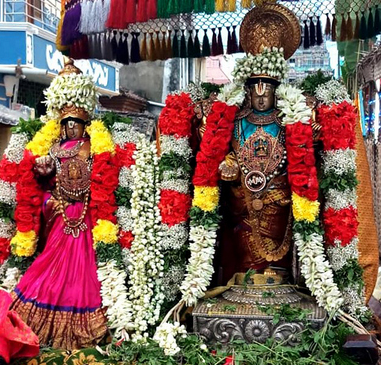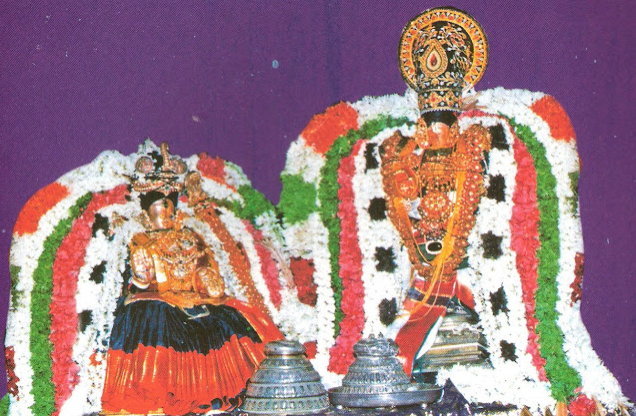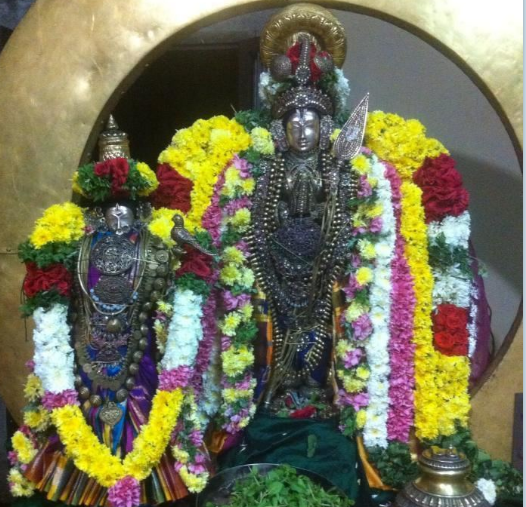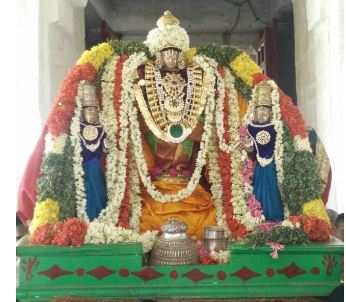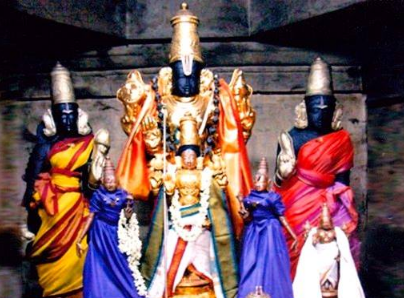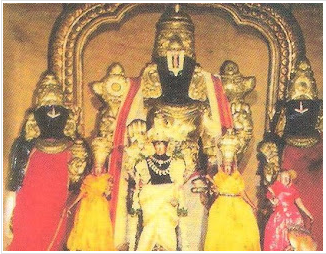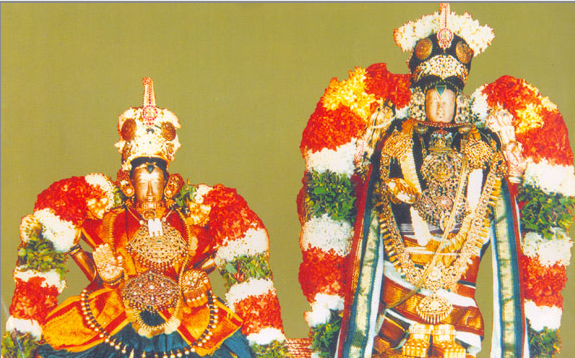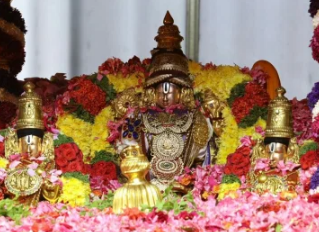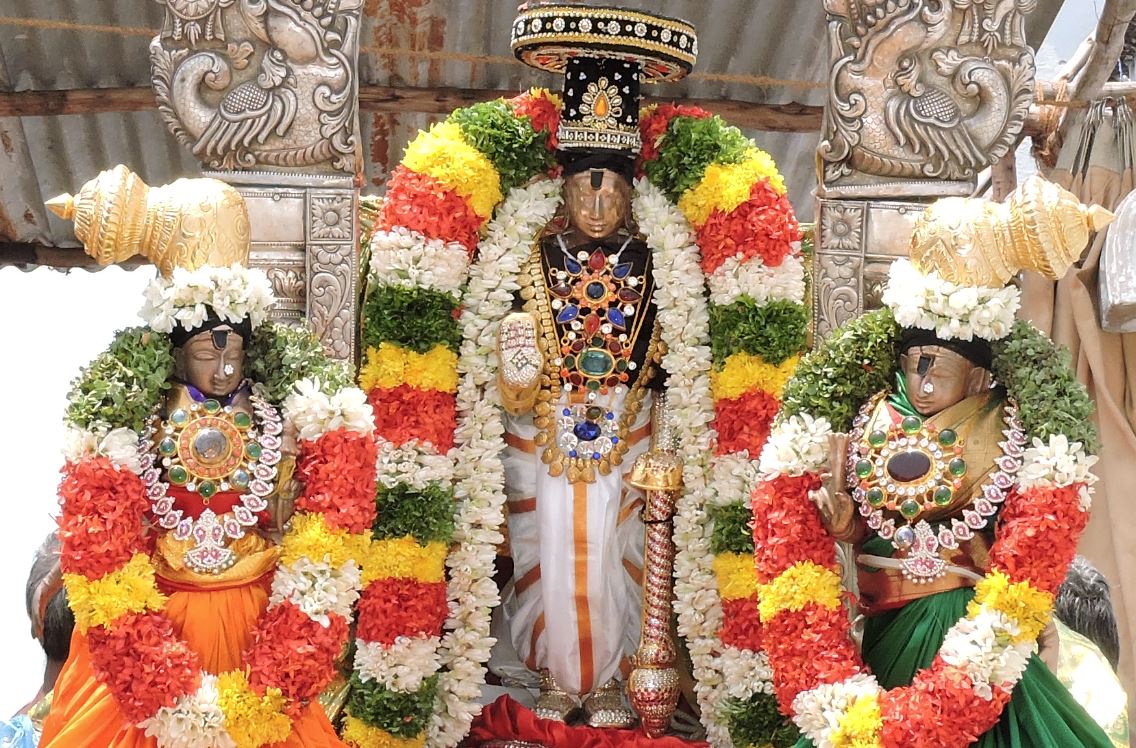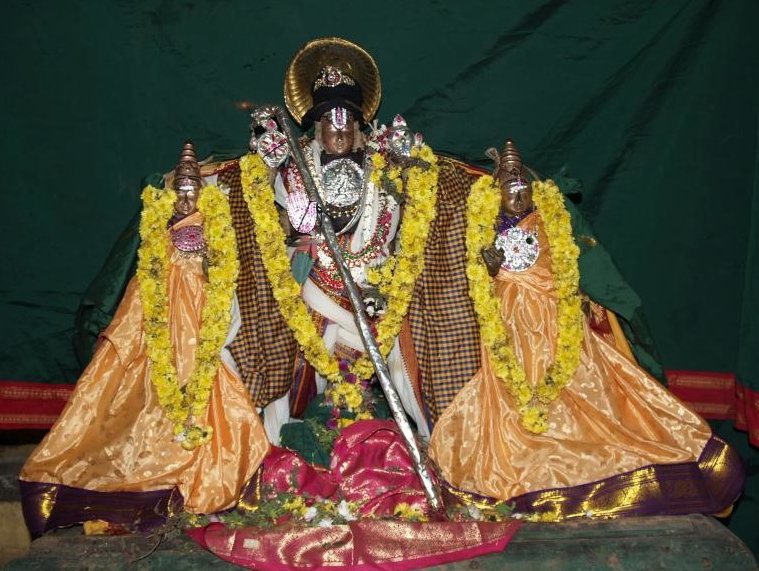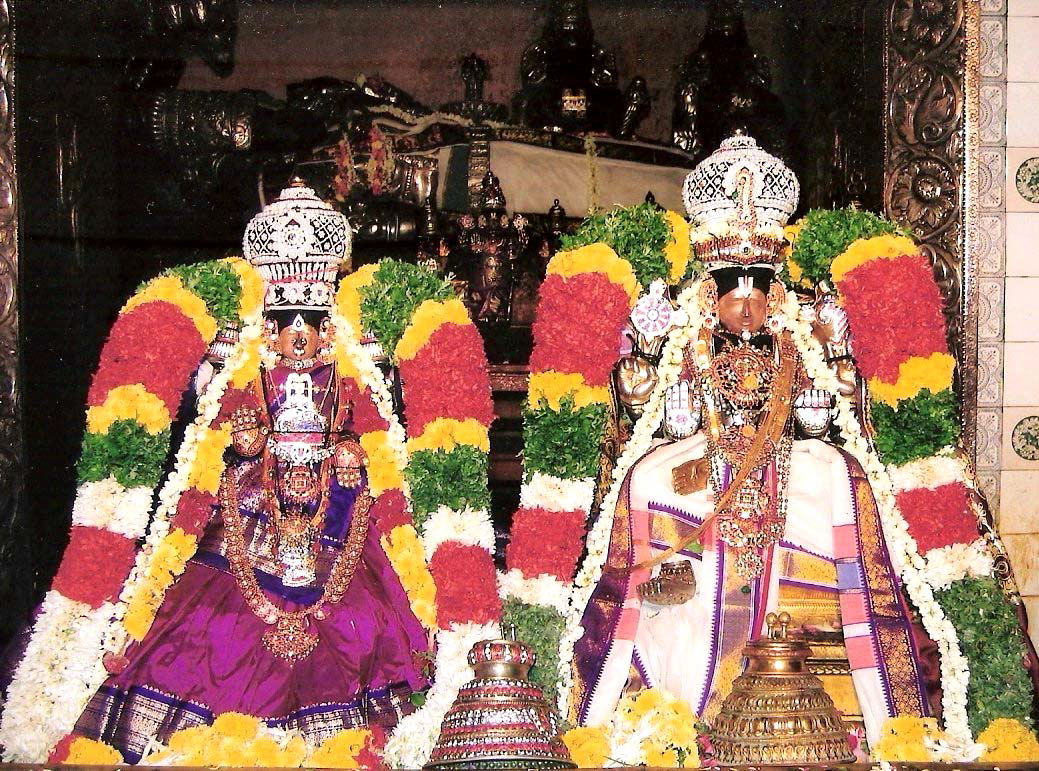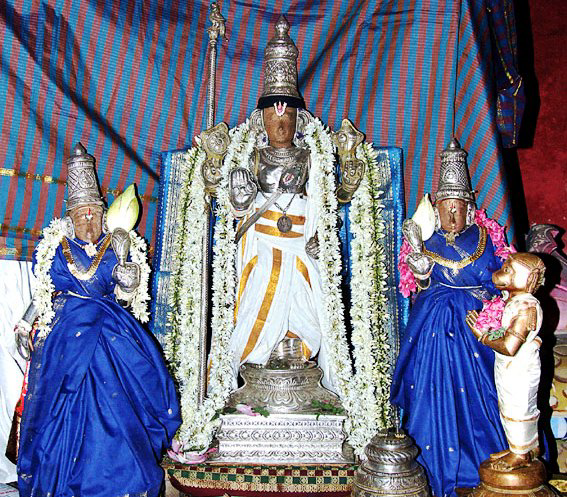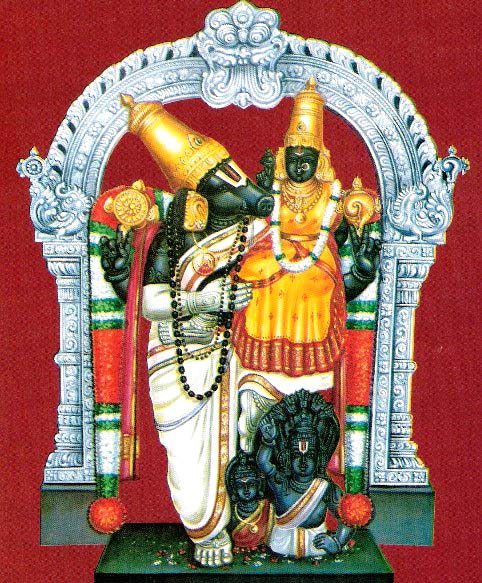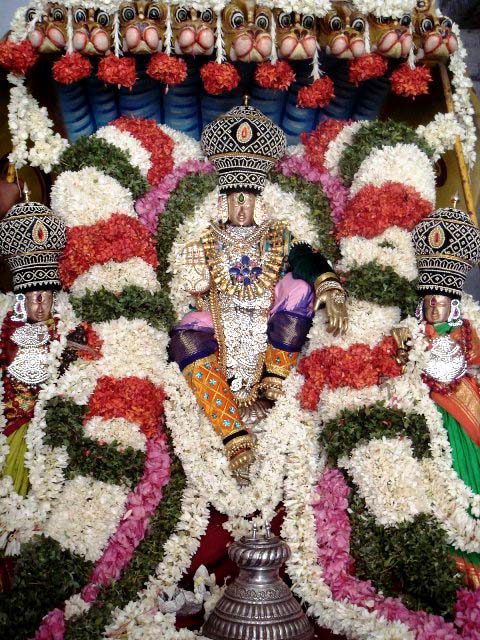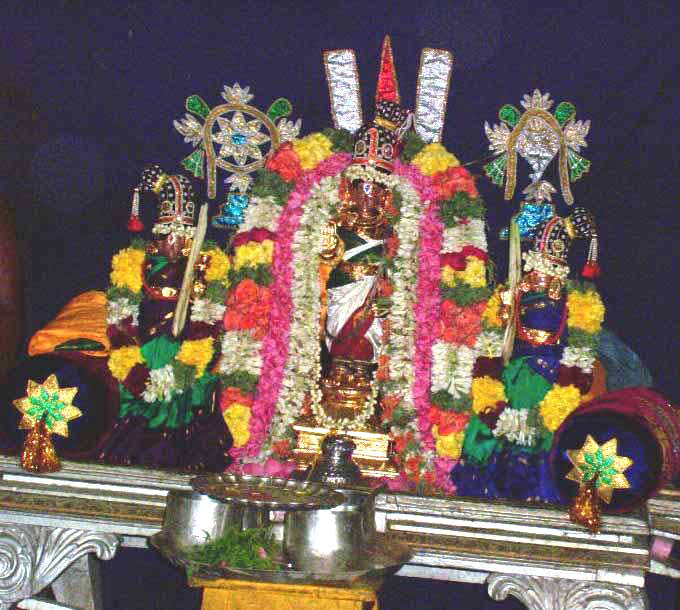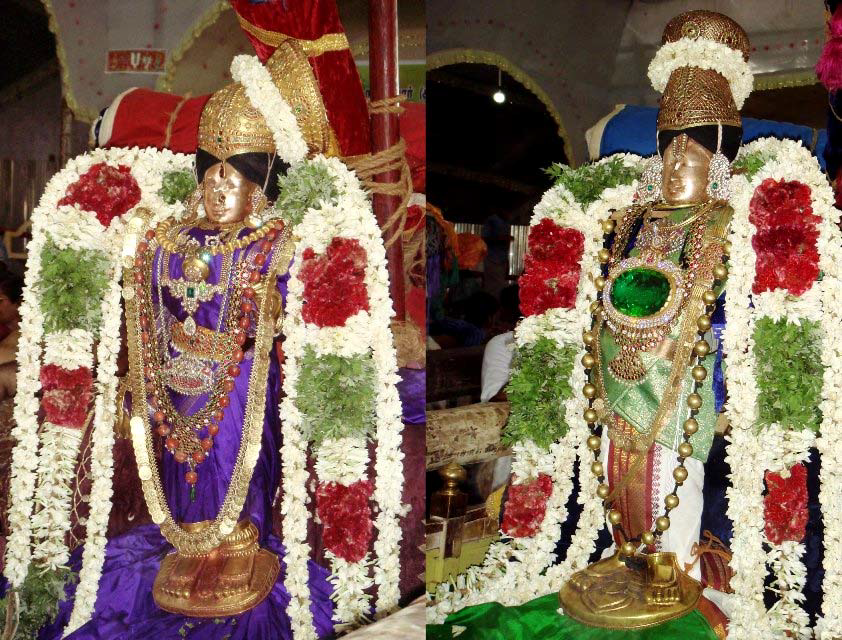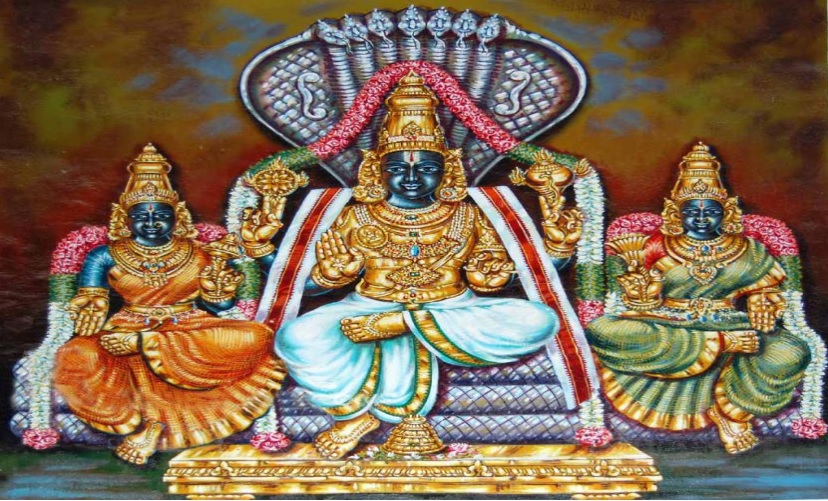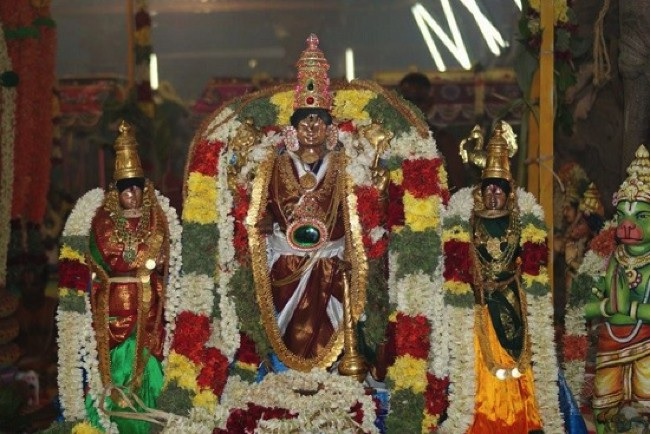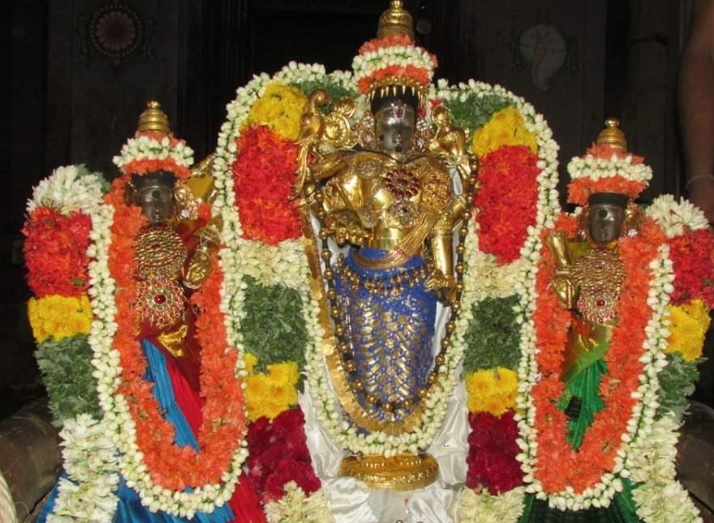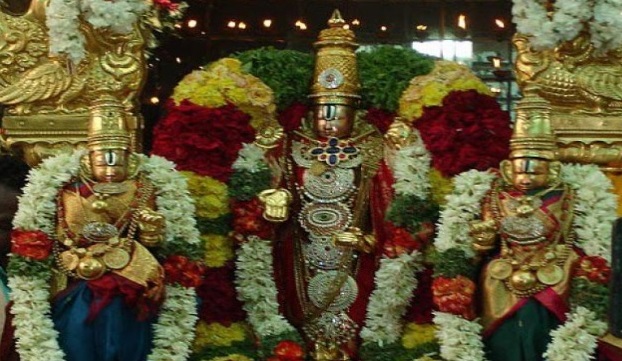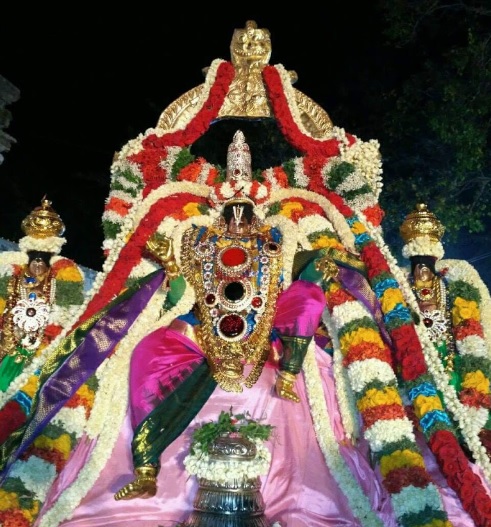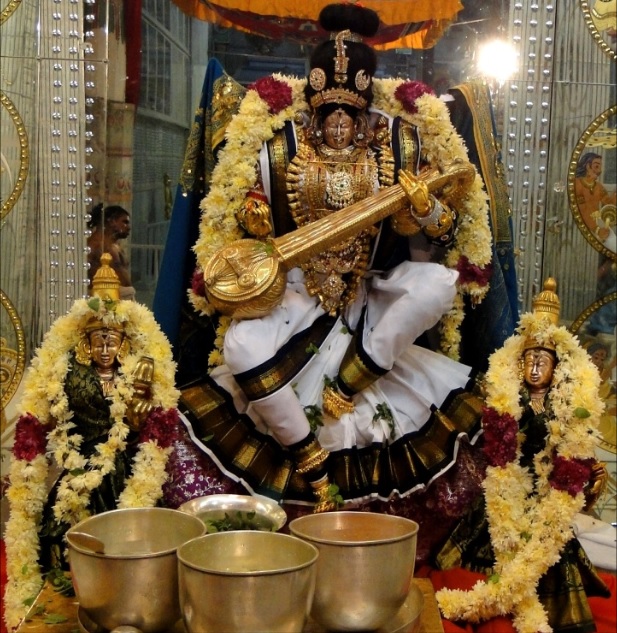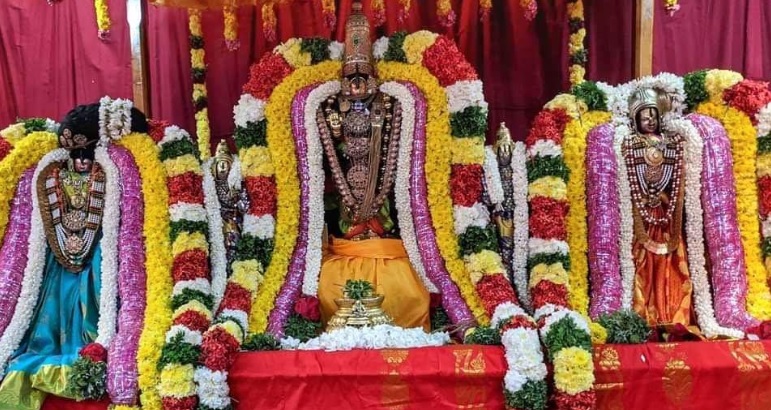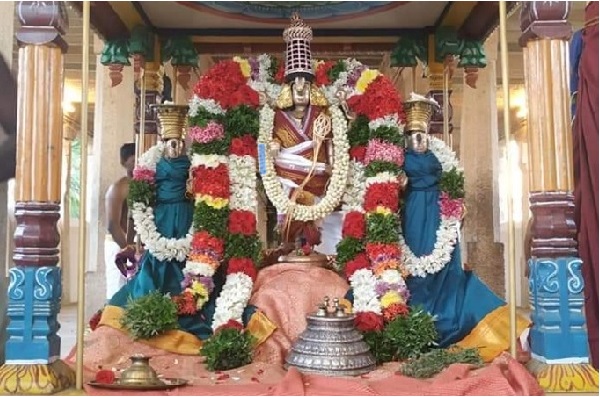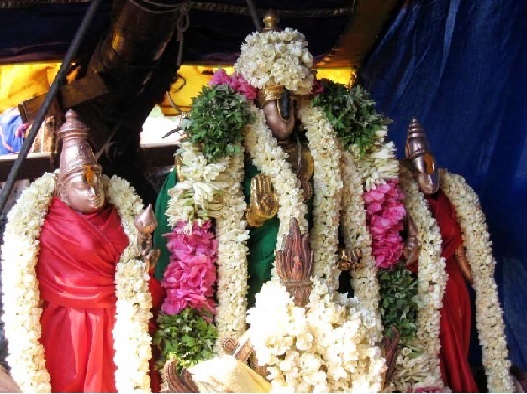Rituals
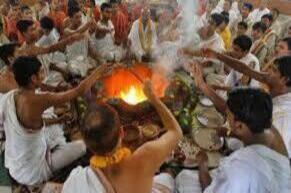
Fire Ritual

Iconic Worship

Sacred Mantras

Iconic Form
The most widespread rituals of worship today are of the Aagamic variety. The Agama methods are worship of images of God through rituals (Tantra), symbolic charts (Yantra) and verbal symbols (Mantra).Agama regards devotion and complete submission to deity as fundamental to pursuit of it aim; and wisdom, enlightenment (jnana) as that which follows eventually by the grace of the worshipped deity. The approach of Agama is basically dualistic, seeking grace, mercy and love of the Supreme God represented by the personal deity, for liberation from earthly attachments (moksha).
Vaikhanasa worship is considered more Vedic, the mantras being Sanskrit based and there is a greater emphasis on details of worship rituals and yajnas.Vaikhanasa follow the lunar calendar.
The Vaikhanasa is the only group among temple-priests to have a kalpa-sutra of their own. They translate in to practice the Vedic dictum that Agni is the lowest of the gods (in the sense being visible to the human eye) and Vishnu, the highest and that therefore the worship of these two effectively means the coverage of the worship of all the gods in whom the Lord is the indweller.
A ritualistic application of the comprehensive and pervasive character of Vishnu can be seen in the custom prevalent in the Vaikhanasa temples of having three idols in addition to the main and immovable stone idol in the sanctum (DhruvaBimbam). The main idol represents in reality Vishnu , possessed of all the powers of divinity and properly installed as a deity (archA). Even as the Veda speaks of 'the three strides' that Vishnu took ('trIni padA vichakramE Vishnuh'), the main idol in the temple also makes three strides represented by three other idols, thus making for pervasion and comprehension.
The symbolism of the four idols (chatur-murti) is interesting:
In the First stride, the main idol is Vishnu, who is being all-pervasive, does not move about. When the presence of Vishnu crystallizes itself for the sake of receiving worship from the devotees, the spirit of the main idol moves out into 'kautuka-beram', which rests on the seat of worship (archA-pItha).
In the Second stride, as the sequence of worship necessitates such rites as administering a bath, the spirit of the main idol moves into the 'snapana-beram', which is placed in the enclosure for bath (snapana-mandapam) which is outside the sanctum.
In the Third stride, is represented when the 'autsava-beram' is taken out in procession (utsava) along the corridors of the temple-enclosures or on the streets of the township. The spirit of the main idol now reaches beyond the confines of the temple.
To these three is usually added another idol known as 'bali-beram', for the sake of distributing food daily to the attendant deities located in the enclosures.

Kautuka beram

Snapana beram
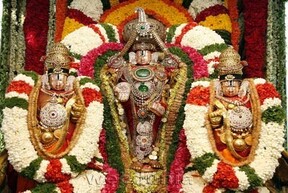
Autsava beram
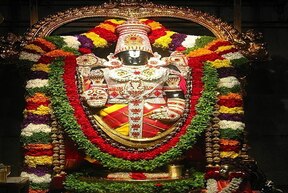
Dhruva beram
Sacramental rites (Ashtadasa Samskaaras) for the individual:
- NishEka: Impregnation and the ceremony connected with it.
- Rutu-sangamana: Coming into contact with the husband at a specific time.
- Garbhadana: Auspicious time for Satsantana Sankalpam.
- Pumsavana: Male-production rite, performed in the fifth month of gestation and before the period of quickening of the foetus.
- Seemantha: A ritual in the 8th month of pregnancy.
- Vishnu-bali: Ritual in connection with receiving the holy emblems of Vishnu, Chakra and Sankham in the Mother's womb itself and is believed to be made by Lord Vishnu himself. This ritual is carried out during Seemantham. (In contrast to the other Sutras, where, the Samasrayanam or Pancha Samskaram is performed after the child is born so as to become a 'Vaishnava', Vaikhanasa Maharishi, specified this Samskaram, which is special to Vaikhanasa Kalpa Sutram, where in, the child will become a Vaishnava by getting the holy marks of Vishnu in the Mother's womb itself, thereby becoming a 'garbha Vaishnava').
- Jaata karma: Ritual connected with the new born. This is a special Samskaram in which the Father of the new born child will create the Agni for his child's Nityagni Anushtanams and till the child is given the Upanayana Samskaram (i.e. when he gets the eligibility to perform sacrifices),that Agni created for the new born will be maintained by the child's Father, till the Upanyanam of the new born, He will perform the Agni Anushtanams on behalf of this child.
- Utthana: Transferring the Mother (who gave birth to the new child) from 'sUtikAgriham' (Maternity Hospital) to Home.
- Naamakarana: Naming ceremony.
- Anna-prasanam: Ceremony of feeding the food (rice) for the first time.
- Pravasagamana: Ritual in which the child is taken to 'Guha' (Guha is the original word used in Vaikhanasa Kalpa Sutram, 'Guha' meaning Kumara Swamy) to perform some holy rites. By performing this Samskaram, the child is said to get the Strength and Health. Kumaraswamy is routinely invoked in VaikhAnasa Aaradhana kramam ("bhUshaNE–-ShaNmukham AavAhayAmi").KumAraswamy is a member of the parivAram of VishNu , the Supreme godhead of VaikhAnasAs and has specific assigned duties.
- Pindavardhanam: After the above Samskaram, It is indicated that a religious food treat is arranged and the Vaikhanasa will have this meal with other Vaikhanasa Brahmins. Also called as 'kumAra bhOjanam' performed during Upanayanam.
- Chaulam: Pancha Sikha and Tonsuring (Sometimes Piercing the Ears is also performed usually during Chaulam).
- Upanayana: Wearing the Sacred thread ceremony.
- Paraayana-Vratabandha-Visarga: Study of Vedic corpus.
- Upakarma: Observing of a rite in continuation of the above .
- Samaavartana: Return from Study.
- Pani-grahana: Marriage.
So the Vaikhanasas have the rites beginning with those connected with birth and ending with the rites regarding death and cremation ('JatakadiSmasanantham').
